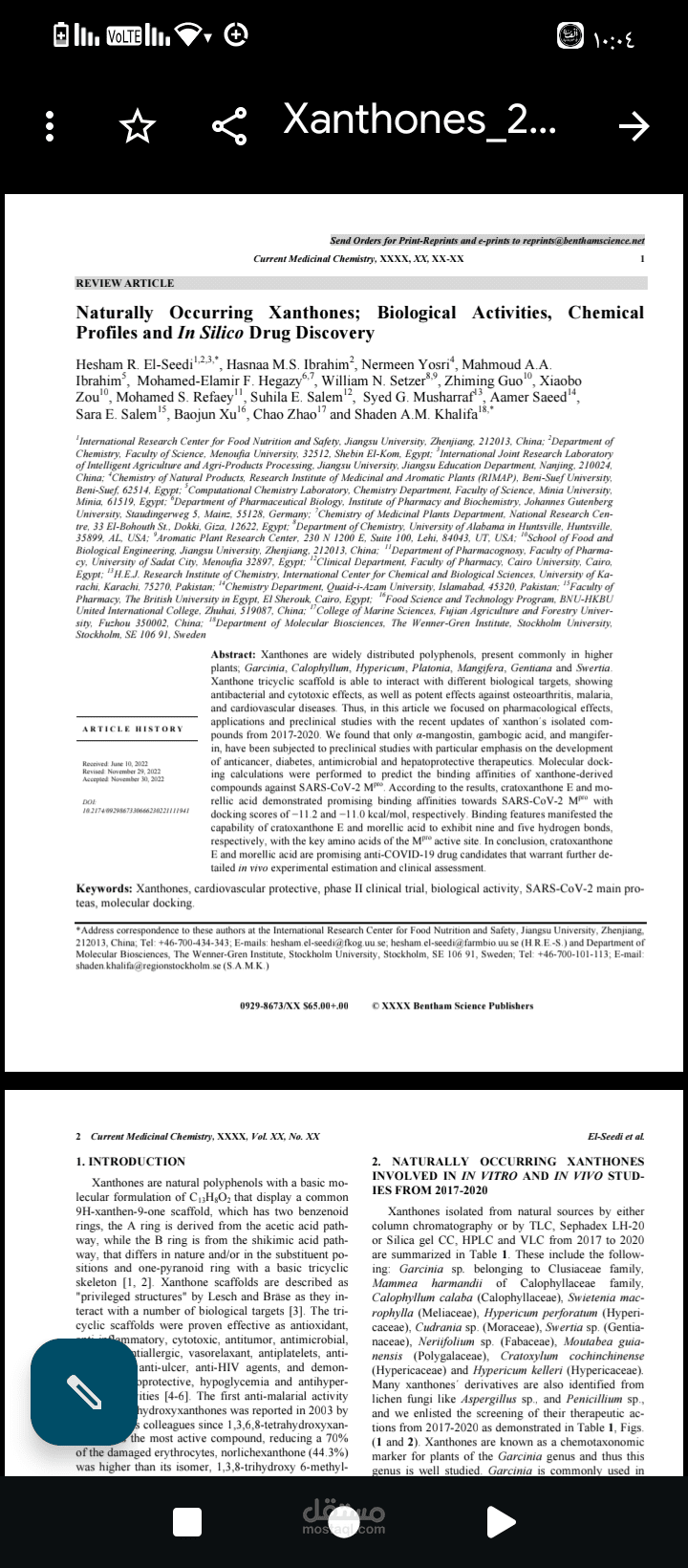Naturally Occurring Xanthones; Biological Activities, Chemical Profiles and In Silico Drug Discovery
تفاصيل العمل
Abstract: Xanthones are widely distributed polyphenols, present commonly in higher
plants; Garcinia, Calophyllum, Hypericum, Platonia, Mangifera, Gentiana and Swertia.
Xanthone tricyclic scaffold is able to interact with different biological targets, showing
antibacterial and cytotoxic effects, as well as potent effects against osteoarthritis, malaria,
and cardiovascular diseases. Thus, in this article we focused on pharmacological effects,
applications and preclinical studies with the recent updates of xanthon´s isolated com-
pounds from 2017-2020. We found that only α-mangostin, gambogic acid, and mangifer-
in, have been subjected to preclinical studies with particular emphasis on the development
of anticancer, diabetes, antimicrobial and hepatoprotective therapeutics. Molecular dock-
ing calculations were performed to predict the binding affinities of xanthone-derived
compounds against SARS-CoV-2 Mpro. According to the results, cratoxanthone E and mo-
rellic acid demonstrated promising binding affinities towards SARS-CoV-2 Mpro with
docking scores of −11.2 and −11.0 kcal/mol, respectively. Binding features manifested the
capability of cratoxanthone E and morellic acid to exhibit nine and five hydrogen bonds,
respectively, with the key amino acids of the Mpro active site. In conclusion, cratoxanthone
E and morellic acid are promising anti-COVID-19 drug candidates that warrant further de-
tailed in vivo experimental estimation and clinical assessment.
